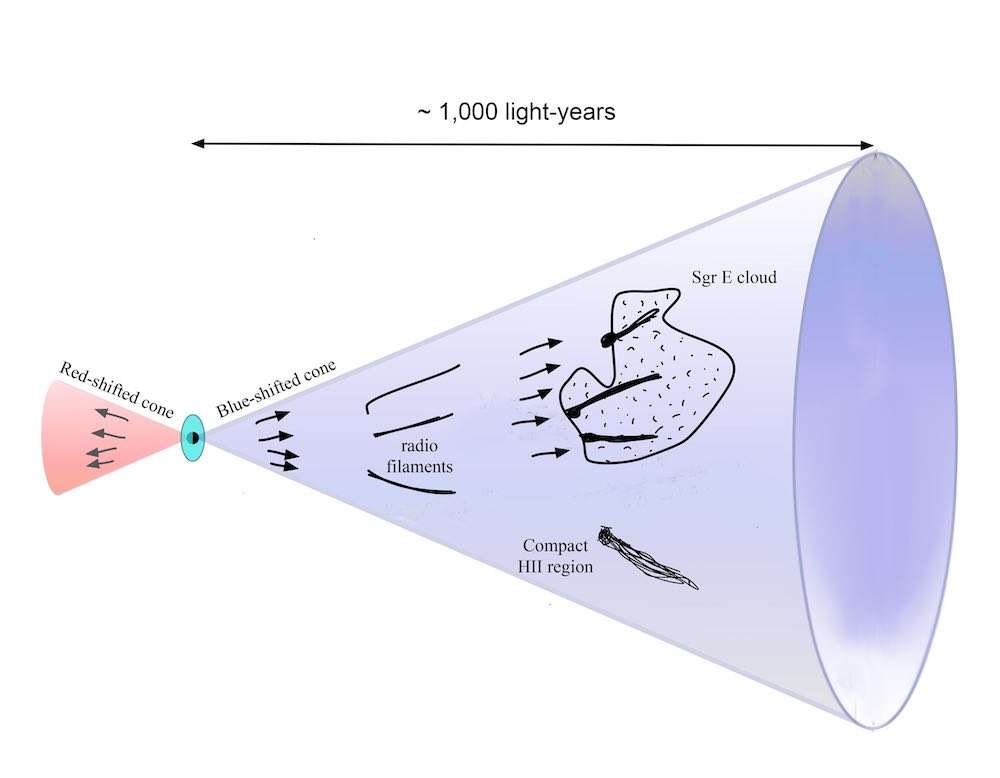New Dinosaur With Rows of Bristles On its Head Like a Toothbrush Has Been Discovered
Paleontologists who discovered the beast completed a CT scan on the skull and revealed these bristles, described like a "brush cut."

Astronomers have found hundreds of mysterious filaments pointing towards the Milky Way's supermassive black hole, which could uncover fresh secrets about the dark abyss at the centre of our galaxy.
The strange horizontal strands are 25,000 light years from Earth and have been likened to spokes spreading out on a wheel.
"It was a surprise to suddenly find a new population of structures that seem to be pointing in the direction of the black hole," said Professor Farhad Yusef-Zadeh, of Northwestern University.
"I was actually stunned when I saw these. We had to do a lot of work to establish that we weren't fooling ourselves. And we found that these filaments are not random but appear to be tied to the outflow of our black hole.
"By studying them, we could learn more about the black hole's spin and accretion disk orientation. It is satisfying when one finds order in a middle of a chaotic field of the nucleus of our galaxy."
Known as Sagittarius A*, the black hole is a staggering four million times the mass of our Sun.
Positioned radially, the filaments measure less than 10 light years in length and look like the dots and dashes of Morse code, punctuating only one side of Sagittarius A*.
The new discoveries are being made possible by enhanced technology, particularly from the South African Radio Astronomy Observatory's (SARAO) MeerKAT telescope.
To uncover the filaments, estimated to be about six million years old, the researchers used a technique to remove the background and smooth the noise from images to isolate them from surrounding structures.
"The new MeerKAT observations have been a game changer," said Prof. Yusef-Zadeh, lead author of the paper published in The Astrophysical Journal Letters. "The advancement of technology and dedicated observing time have given us new information. It is really a technical achievement from radio astronomers."
He believes the filaments, pointing radially toward the black hole, appear to be tied to activities in the galactic center.

They appear to emit thermal radiation, accelerating material in a molecular cloud. There are several hundred vertical compared to just a few hundred horizontal.
The new discovery is filled with unknowns and work to unravel its mysteries has just begun. For now, he can only consider a plausible explanation about the new population's mechanisms and origins.
"We think they must have originated with some kind of outflow from an activity that happened a few million years ago.
"It seems to be the result of an interaction of that outflowing material with objects near it. Our work is never complete. We always need to make new observations and continually challenge our ideas and tighten up our analysis."
Black holes are formed when a dying star collapses inward under the pressure of its own weight. The pull of gravity is so strong that even light can't escape. This is what makes them invisible. This leads to a supernova, a star's extremely powerful explosion.
Supermassive black holes can be billions the size of our sun and astronomers believe they can be found at the centre of all large galaxies.
POINT YOUR FRIENDS to This Mystery By Sharing on Social Media
Be the first to comment